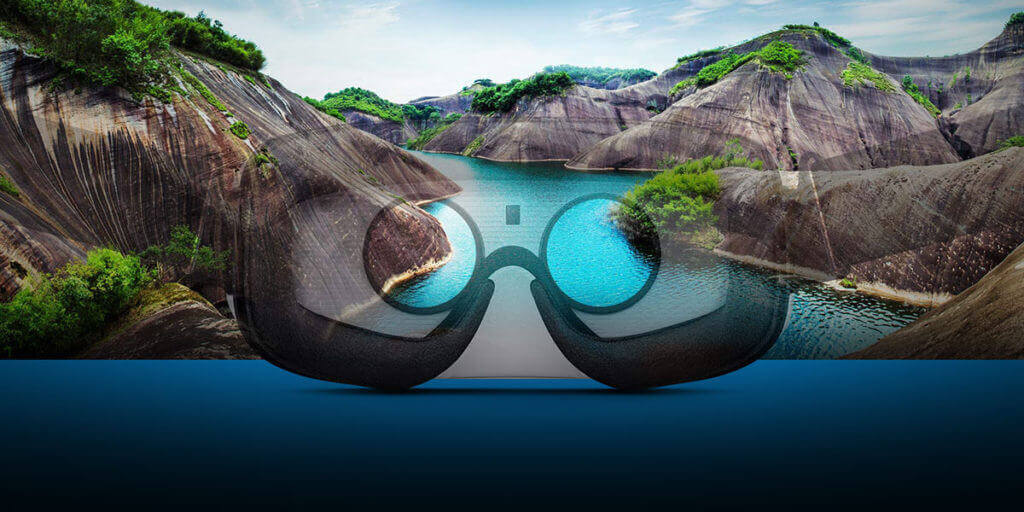So, Where Were We?
That’s right! Last time I wrote to you, waaaay back in Taste the Difference, Pt. 1, I outlined the basic difference between monoscopic and stereoscopic 360º and VR video. Or, as I so deliciously analogized, between a cheeseburger and a Philly cheesesteak. Understanding the distinction between the 2 is kind of a big deal moving forward. So, if you’ve forgotten about looking around in a glass room, getting depth information from extra cameras, or James Cameron’s narrative thievery, go back and give it a once over.
Got it?
Alright then: I’m sure you must be famished by now. All that time stuck wondering whether you really want that cheeseburger or that Philly. Though both are mighty tasty, there are pros and cons to both…
Stereoscopic 360º VR: Challenging Ingredients
When you compare monoscopic v.s. stereoscopic 360º video, one key factor that separates the two is the depth of field information available in stereoscopic. This depth information is key to the stereoscopic 360º video experience. It’s what creates the immersive 3D effect that wows so many viewers.
However, this effect comes with a cost. To create this look, the depth information has to be overlaid and mapped to a sphere. This is no small feat. The parallax between cameras makes correctly mapping out all this information a challenging time suck.
Moreover, good luck if you forget to account for the stitch seams between cameras when blocking your shots. These cameras are unforgiving. Even the slightest flaw gets magnified once it’s translated to 3D. And as a result, your image gets warped, distorted, and looks like something from the mind of David Lynch. Or even worse, it makes objects or people look like crude cardboard cutouts. Plus, if you’re not careful the objects in your shots could be haloed by an off-putting magenta or green aura, more commonly known as chromatic aberration.
What’s more, these anomalies can occur in different places per eye, which, in turn, makes it uncomfortable—even painful—to watch. We’re talking eye strain, nausea, even headaches. And that makes for a terrible viewer experience, to say the least.
So, what does this all mean? Simply put: stereoscopic 3D video is an awesome, cutting edge experience when it’s executed correctly, but a terrible, messy nightmare when all the factors aren’t meticulously planned.
Simplifying the Philly Recipe: Limiting Stereoscopic 360º Video Factors
So now that we know just how bad a poorly-planned Philly cheesesteak—er, stereoscopic 360º VR video—can be, what can we do to make sure it comes out right every time? Here are 2 simple tricks to get tasty, beautiful results:
- Shoot in a controlled environment
Like cooking in a clean, organized kitchen, shooting stereoscopic 360º video in a strictly-blocked and well controlled environment will yield much better results. The most rampant issue with stereoscopic 360º VR video are the distortions that seam crossing causes. So, if you stage your action/actors in a way that limits or even eliminates crossing these lines, you can greatly decrease your number of visual issues. In the industry, we call that #winning.
- Stay calm, and stay put:
I’ll admit: the resulting stereoscopic 360º footage from dollying through an environment is pretty damn cool. However, it’s also a pain in the ass to stitch without creating anomalies. Slowly but surely, contemporary technology will get to the point where we can capture this with ease. Problem is, we’re just not there yet. Save yourself the stress and shoot stationary if you’re going for stereoscopic 360º video.
Making A Case for the Cheeseburger: Monoscopic 360º Video Benefits
We’ve talked a lot about how delicious yet potentially flawed the Philly cheesesteak of stereoscopic 360º video can be. But what about its cheeseburger counterpart, monoscopic 360º video? The truth is that while it’s not as immersive or robust as its true 3D cousin, monoscopic 360 video has a ton of benefits (and it’s still pretty damn cool).
First of all, in almost all cases, the resolution of monoscopic 360º video will be much higher than its corresponding stereoscopic versions. When you don’t have to stack multiple channels (left and right, up and down) on top of each other, your device can refocus its resources on resolution. To put it succinctly: with monoscopic 360º video, you sacrifice cool depth information for greater clarity.
And truthfully, though they might not know the nomenclature, most consumers actually prefer monoscopic 360º video. I mean, what’s the point of experiencing something in 360º if the whole thing is blurry and disjointed?
In the end, it’s just easier to find a good cheeseburger than it is to find a lip-smackingly-good Philly cheesesteak.
[clickToTweet tweet=”Making exciting 360º video content is all about implementing cool concepts with a blow-your-mind good team.” quote=”Making exciting 360º video content is all about implementing cool concepts with a blow-your-mind good team.” theme=”style3″]
Setting the Table…For the Future of 360º Video
As my friend and co-worker Cameron Shaw notes in his recent post, the future of 360º video is bright. Both monoscopic and stereoscopic 360º video are still in their infancy as a storytelling mediums. No one has mastered their capabilities. Yet. But once they’re harnessed, they have the potential to be truly revolutionary mediums.
At the end of the day, both our cheeseburger and our Philly cheesesteak have a lot of work to do. That is, if foods could do the work…
But that doesn’t mean they can’t yield awesome works in the here and now! Making exciting 360º video content is all about implementing cool concepts with a blow-your-mind good team. A team whose hands-on experience with this bleeding edge tech has yielded some kick-ass projects. A team like ECG Productions, for instance.
Whether you have a hankering for a cheeseburger or can’t kick your craving for a Philly cheesesteak, great teams like ECG can make any kind of 360º video a fun experience.
Bon appétit.






One Response
Hi. What about filming wildlife (specifically fish) with stereoscopic 360? By what I read here it would be a nightmare to stitch the footage properly. But, would there be a “safe distance” from the camera to the animals that would allow for proper stitching? Fish are moving all the time. I’m thinking about big schools of fish where I can swim through and sometimes the fish can be a meter from the lens. Please, let me know what you think.
Cheers!!